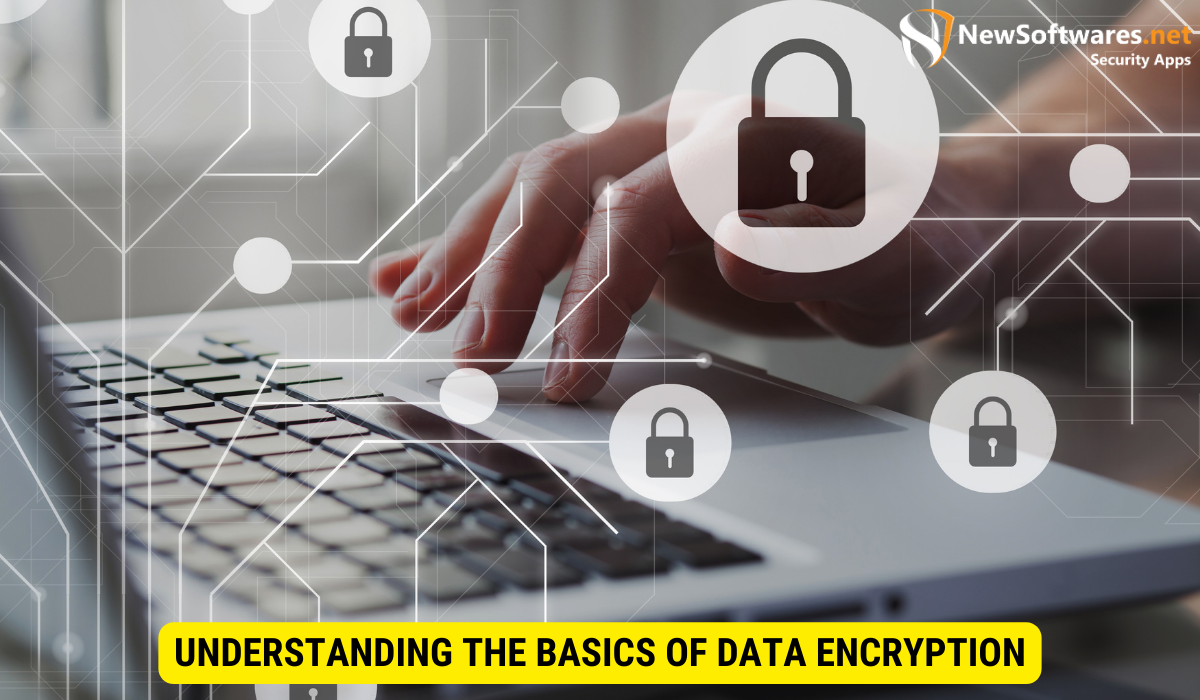Data encryption is the process of converting plain text into unreadable ciphertext using algorithms and encryption keys, ensuring the confidentiality and integrity of sensitive information. It plays a crucial role in safeguarding privacy and protecting data from unauthorized access in today’s digital landscape.
Data encryption is an necessary method of securing sensitive information in today’s digital age. With the increasing instances of data breaches and cyber-attacks, it has become crucial for individuals and organizations to shield their data from illegal access. In this comprehensive guide, together we will delve into the intricacies of data encryption, including its basics, key elements, modern techniques, and how to choose the right method for your needs.
Understanding the Basics of Data Encryption

Before we delve into the complexities of data encryption, it is essential to understand its definition and importance. Data encryption refers to the process of changing plain text into unreadable ciphertext using algorithms and encryption keys. This cryptographic technique allows data to be securely transmitted and stored, ensuring confidentiality and integrity.
Data encryption plays a significant role in preserving isolation. It safeguards sensitive information, such as personal data, financial records, and trade secrets from being accessed by unauthorized individuals or entities. By encrypting data, even if it falls into the wrong hands, it remains incomprehensible without the proper decryption key.
There are various types of data encryption techniques designed to suit different needs and scenarios. Let’s explore some of the most commonly used ones.
Definition and Importance of Data Encryption
Data encryption is the procedure of changing plain text into cipher text to protect it from unauthorized access. It ensures the secracy and integrity of sensitive information, making it a crucial aspect of data security in today’s digital landscape.
The Role of Data Encryption in Privacy
Data encryption plays a critical role in preserving privacy by safeguarding sensitive information from unauthorized access. It allows individuals and organizations to securely transmit and store their data, ensuring that it remains confidential and protected from prying eyes.
Different Types of Data Encryption
There are several types of data encryption techniques available, each with its unique characteristics and use cases. Some of the most common types include:
- Symmetric Encryption: This technique uses the same key for both encryption and decryption. It is relatively fast and efficient but requires secure key exchange.
- Asymmetric Encryption: Also known as public-key encryption, this technique uses a pair of mathematically related keys – a communal key for encryption & a private key for decoding.
- Hash Functions: Hash functions are used to adapt data of any size into a fixed-size hash value. While not used specifically for encryption, they play a crucial role in data integrity and digital signatures.
Key Elements of Data Encryption
In order to grasp the intricacies of data encryption, it is important to understand the key elements that form the foundation of this technique. Let’s delve into the essential components:
Encryption Keys: What They Are and How They Work
Encryption keys are essential in the encryption and decryption process. They are a predetermined set of bits used to convert plain text into cipher text & vice versa. The strength of an encryption key directly impacts the security of the data transmission or storage.
There are two main type of encryption keys:
- Symmetric Keys: Symmetric keys use the same key for both encryption & decryption. This means that the key must be firmly shared or exchanged between the sender and the recipient.
- Asymmetric Keys: Asymmetric keys, also known as public-key encryption, use a pair of accurately related keys – a communal key for encryption & a private key for decoding. The public key can be freely shared, as the confidential key must be kept secret.
Public Key vs Private Key: A Comparison
The primary difference between public and private keys lies in their use and distribution. Public keys are designed to be freely shared and are used for encryption, while private keys are kept secret and used for decryption.
This asymmetric encryption approach allows for secure communication between two parties without the need for a secure key exchange. The sender encrypts the data using the recipient’s public key & the recipient decrypts it using their personal key.
The Process of Encryption and Decryption
Data encryption and decryption involve a series of steps to ensure the secure transformation of plain text into cipher text and its subsequent reversal. The encryption process typically involves:
- Converting the plain text into binary representation
- Applying the encryption algorithm and encryption key to the binary data
- Obtaining the cipher text
The decryption process is the reverse of encryption, involving:
- Obtaining the cipher text
- Applying the decryption algorithm and decryption key
- Recovering the original plain text
Modern Data Encryption Techniques
As technology advances, so do data encryption techniques. Let’s explore some of the modern methods used in securing sensitive information:
Symmetric Encryption: An Overview
Symmetric encryption is a widely used encryption method due to its simplicity and efficiency. It uses the same encryption key for both encryption and decryption processes. Popular symmetric encryption algorithms include the Advanced Encryption Standard (AES) and Data Encryption Standard (DES).
One of the main challenges with symmetric encryption is the secure exchange of the encryption key between the sender and recipient.
Asymmetric Encryption: An Overview
Asymmetric encryption, also recognized as public-key encryption, provides a solution to the challenges faced with symmetric encryption. It uses a duo of related keys – a public key for encryption & a private key for decryption.
Asymmetric encryption offers secure communication and eliminates the need for a secure key exchange. However, it is computationally more expensive than symmetric encryption.
Hash Functions in Data Encryption
Hash functions play a vital task in data integrity and digital signatures. They convert data of any size into a fixed-size hash value, which is used to verify the integrity of the data. Hash functions are usually used in conjunction with encryption algorithms to ensure data integrity during transmission or storage.
Choosing the Right Data Encryption Method

When it comes to choosing the right data encryption method, several factors need to be considered. Let’s explore some of the key considerations:
Factors to Consider When Choosing an Encryption Method
- Security: The encryption method should provide a high level of security, ensuring the confidentiality and integrity of sensitive information.
- Compatibility: The encryption method should be compatible with the systems and devices used for data transmission and storage.
- Scalability: The encryption method should be scalable to accommodate the growing volume of data and future technological advancements.
- Key Management: The encryption method should have a robust key management system to ensure secure key exchange and storage.
- Regulatory Compliance: Depending on industry regulations, certain encryption standards may be required to ensure compliance.
Pros and Cons of Different Encryption Methods
- Symmetric Encryption Pros: Fast and efficient, less computationally demanding, well-suited for large volumes of data.
Symmetric Encryption Cons: Requires secure key exchange, not suitable for secure communication between unknown parties.
- Asymmetric Encryption Pros: Secure communication between unknown parties, eliminates the need for a secure key exchange.
Asymmetric Encryption Cons: Computationally expensive, slower than symmetric encryption.
- Hash Functions Pros: Ensures data integrity, used in digital signatures.
Hash Functions Cons: Cannot be reversed or decrypted, not suitable for encryption purposes.
Key Takeaways
- Data encryption is necessary for protecting sensitive information in today’s digital landscape.
- There are various types of data encryption techniques, including symmetric encryption, asymmetric encryption, and hash functions.
- Encryption keys, whether symmetric or asymmetric, are crucial in the encryption and decryption process.
- Symmetric encryption is efficient but requires a secure key exchange, while asymmetric encryption allows for secure communication between unknown parties.
- Choosing the right data encryption method involves considering factors such as security, compatibility, scalability, key management, and regulatory compliance.
Frequently Asked Questions
Why is data encryption important?
Data encryption is crucial because it ensures the confidentiality and integrity of sensitive information. It protects data from unauthorized access and safeguards privacy.
What are the different types of data encryption?
The different types of data encryption include symmetric encryption, asymmetric encryption (public-key encryption), and hash functions.
How does asymmetric encryption work?
Asymmetric encryption involve use of a couple of mathematically related keys, such as a communal keys for encryption and a private key for decoding. The public key can be freely shared, whilst the confidential key must be kept secret.
What are the advantages of symmetric encryption?
Advantages of symmetric encryption include its speed and efficiency, making it suitable for large volumes of data. However, it requires a secure key exchange and is not ideal for secure communication between unknown parties.
What are the factors to consider when choosing an encryption method?
The factors to judge when choosing an encryption method include security, compatibility, scalability, key management, and regulatory compliance.
Conclusion
Data encryption is a basic aspect of securing sensitive information in today’s digital age. Whether it is individual data, financial records, or trade secrets, encrypting data ensures its confidentiality and integrity. By understanding the basics, key elements, and modern techniques of data encryption, individuals and organizations can make well-versed decisions when it comes to safeguarding their data. Choosing the right encryption method involves considering factors such as security, compatibility, scalability, key management, and regulatory compliance. Stay vigilant, embrace encryption, and protect your data from unauthorized access.
